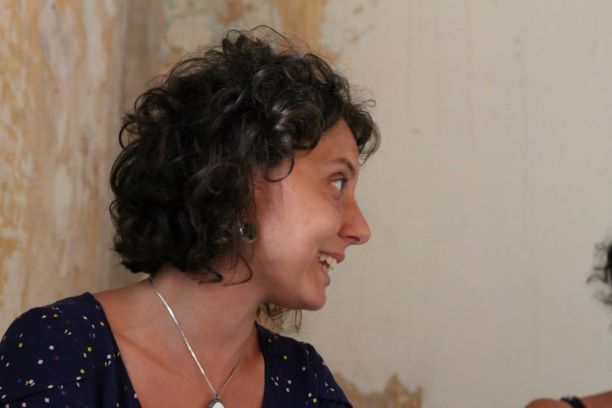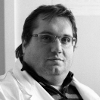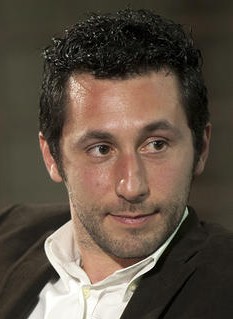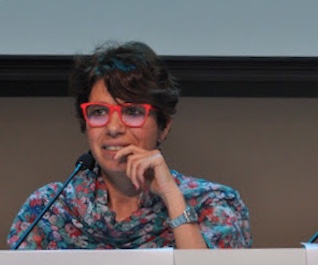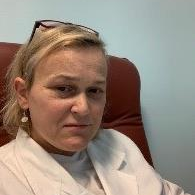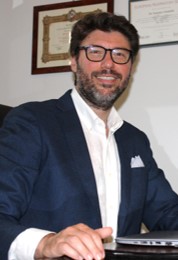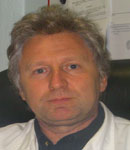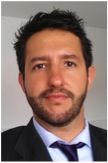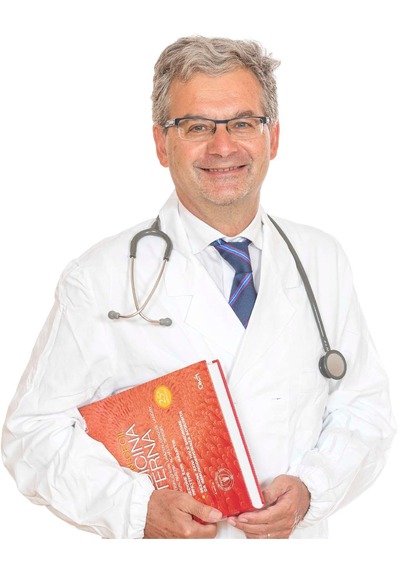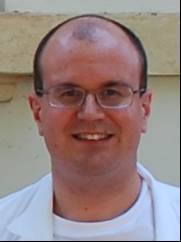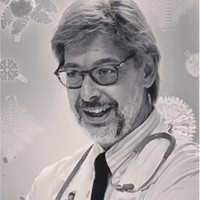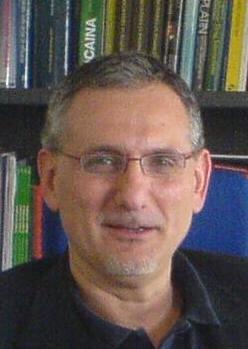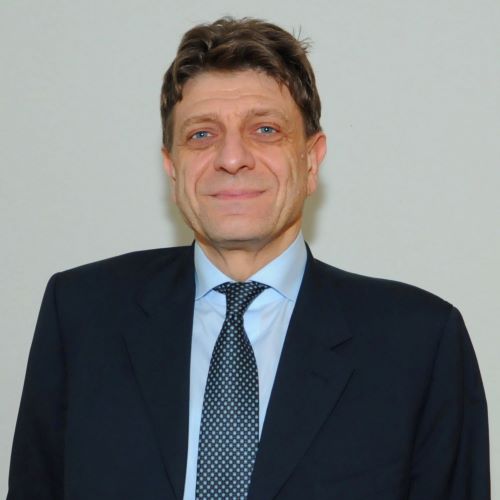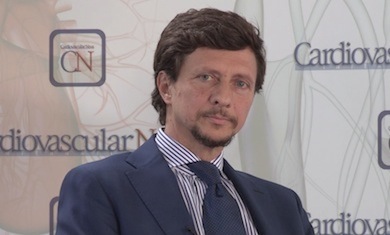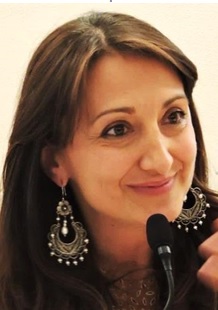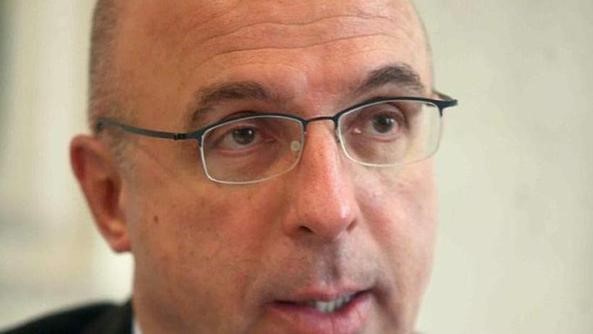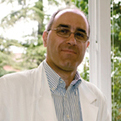Studying at the University of Verona
Here you can find information on the organisational aspects of the Programme, lecture timetables, learning activities and useful contact details for your time at the University, from enrolment to graduation.
Academic calendar
The academic calendar shows the deadlines and scheduled events that are relevant to students, teaching and technical-administrative staff of the University. Public holidays and University closures are also indicated. The academic year normally begins on 1 October each year and ends on 30 September of the following year.
Course calendar
The Academic Calendar sets out the degree programme lecture and exam timetables, as well as the relevant university closure dates..
| Period | From | To |
|---|---|---|
| 1° e 2° semestre (corsi annuali) PROFESSIONI SANITARIE | Oct 1, 2021 | Sep 30, 2022 |
| 1 SEMESTRE PROFESSIONI SANITARIE | Oct 1, 2021 | Dec 23, 2021 |
| 2 SEMESTRE PROFESSIONI SANITARIE | Jan 10, 2022 | Sep 30, 2022 |
| Session | From | To |
|---|---|---|
| 1^ SESSIONE A.A. 2020/2021 | Oct 1, 2021 | Nov 30, 2021 |
| 2^ SESSIONE A.A. 2020/2021 | Mar 1, 2022 | Apr 30, 2022 |
| Period | From | To |
|---|---|---|
| Festa di Tutti i Santi | Nov 1, 2021 | Nov 1, 2021 |
| Festa dell'Immacolata Concezione | Dec 8, 2021 | Dec 8, 2021 |
| Festa della Liberazione | Apr 25, 2022 | Apr 25, 2022 |
| Festa di San Zeno - S. Patrono di Verona | May 21, 2022 | May 21, 2022 |
| Festa della Repubblica | Jun 2, 2022 | Jun 2, 2022 |
Exam calendar
Exam dates and rounds are managed by the relevant Medicine Teaching and Student Services Unit.
To view all the exam sessions available, please use the Exam dashboard on ESSE3.
If you forgot your login details or have problems logging in, please contact the relevant IT HelpDesk, or check the login details recovery web page.
Should you have any doubts or questions, please check the Enrollment FAQs
Academic staff
 marialivia.alga@univr.it
marialivia.alga@univr.it
 elisabetta.allegrini@aovr.veneto.it
elisabetta.allegrini@aovr.veneto.it
 michele.bertani@univr.it
michele.bertani@univr.it
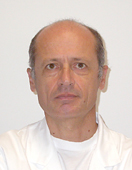
Bisoffi Zeno
 zeno.bisoffi@sacrocuore.it
zeno.bisoffi@sacrocuore.it
 +390456013326
+390456013326
 federica.bonato@aor.veneto.it
federica.bonato@aor.veneto.it
Cunico Laura
 laura.cunico@univr.it
laura.cunico@univr.it
 0444752922
0444752922
 francesca.defanti@univr.it
francesca.defanti@univr.it
 stefano.detogni@univr.it
stefano.detogni@univr.it
 massimo.dibenedetto@univr.it
massimo.dibenedetto@univr.it
 jessica.longhini@univr.it
jessica.longhini@univr.it
 laura.messina@univr.it
laura.messina@univr.it
 nicola.pelizzari@univr.it
nicola.pelizzari@univr.it
Pighi Michele
 michele.pighi@univr.it
michele.pighi@univr.it
 0458122320
0458122320
 sara.pilotto@univr.it
sara.pilotto@univr.it
 zenogabriele.poli@univr.it
zenogabriele.poli@univr.it
 er.vedovi@virgilio.it
er.vedovi@virgilio.it
 liria.veronesi@univr.it
liria.veronesi@univr.it
 tamara.zerman@univr.it
tamara.zerman@univr.it
 lzivelonghi@aulss9.veneto.it
lzivelonghi@aulss9.veneto.it
Study Plan
The Study Plan includes all modules, teaching and learning activities that each student will need to undertake during their time at the University.
Please select your Study Plan based on your enrollment year.
1° Year
| Modules | Credits | TAF | SSD |
|---|
Pathophysiology applied at Nursing
Biomolecular fondamentals of life
Morphological and functional fundamentals of life
General and methodological nursing
Health and safety promotion
English for Nursing
Clinical practice (1st year)
2° Year activated in the A.Y. 2022/2023
| Modules | Credits | TAF | SSD |
|---|
Application of diagnostic and therapeutic processes
Chronic clinical nursing care
Clinical nursing care in surgical area
Clinical nursing care in medical area
Relationship in nursing care
Clinical practice (2nd year)
3° Year activated in the A.Y. 2023/2024
| Modules | Credits | TAF | SSD |
|---|
Maternal and paediatric nursing care
Critical nursing care
Evidence based nursing
Health organizations and care processes
Legal, bioethic and deontological principles of professional practice
Clinical practice (3rd year)
Corso di Rianimazione di Base con utilizzo del defibrillatore semiautomatico
- Corso di Rianimazione di Base con utilizzo del defibrillatore semiautomatico [Gruppo 1]
- Corso di Rianimazione di Base con utilizzo del defibrillatore semiautomatico [Gruppo 2]
- Corso di Rianimazione di Base con utilizzo del defibrillatore semiautomatico [Gruppo 3]
- Corso di Rianimazione di Base con utilizzo del defibrillatore semiautomatico [Gruppo 4]
- Corso di Rianimazione di Base con utilizzo del defibrillatore semiautomatico [Gruppo 5]
- Corso di Rianimazione di Base con utilizzo del defibrillatore semiautomatico [Gruppo 6]
- Corso di Rianimazione di Base con utilizzo del defibrillatore semiautomatico [Gruppo 7]
- Corso di Rianimazione di Base con utilizzo del defibrillatore semiautomatico [Gruppo 8]
| Modules | Credits | TAF | SSD |
|---|
Pathophysiology applied at Nursing
Biomolecular fondamentals of life
Morphological and functional fundamentals of life
General and methodological nursing
Health and safety promotion
English for Nursing
Clinical practice (1st year)
| Modules | Credits | TAF | SSD |
|---|
Application of diagnostic and therapeutic processes
Chronic clinical nursing care
Clinical nursing care in surgical area
Clinical nursing care in medical area
Relationship in nursing care
Clinical practice (2nd year)
| Modules | Credits | TAF | SSD |
|---|
Maternal and paediatric nursing care
Critical nursing care
Evidence based nursing
Health organizations and care processes
Legal, bioethic and deontological principles of professional practice
Clinical practice (3rd year)
Corso di Rianimazione di Base con utilizzo del defibrillatore semiautomatico
- Corso di Rianimazione di Base con utilizzo del defibrillatore semiautomatico [Gruppo 1]
- Corso di Rianimazione di Base con utilizzo del defibrillatore semiautomatico [Gruppo 2]
- Corso di Rianimazione di Base con utilizzo del defibrillatore semiautomatico [Gruppo 3]
- Corso di Rianimazione di Base con utilizzo del defibrillatore semiautomatico [Gruppo 4]
- Corso di Rianimazione di Base con utilizzo del defibrillatore semiautomatico [Gruppo 5]
- Corso di Rianimazione di Base con utilizzo del defibrillatore semiautomatico [Gruppo 6]
- Corso di Rianimazione di Base con utilizzo del defibrillatore semiautomatico [Gruppo 7]
- Corso di Rianimazione di Base con utilizzo del defibrillatore semiautomatico [Gruppo 8]
Legend | Type of training activity (TTA)
TAF (Type of Educational Activity) All courses and activities are classified into different types of educational activities, indicated by a letter.
Pathophysiology applied at Nursing [Matricole dispari] (2021/2022)
The teaching is organized as follows:
INFERMIERISTICA CLINICA
Credits
3
Period
See the unit page
Academic staff
See the unit page
Learning outcomes
The course introduces the student to the basic concepts of major diseases and the fundamental pathogenetic processes, allowing them to correlate cellular homeostatic mechanisms to alterations of the organ functions and clinical manifestations of disease. Students will understand the basic principles of pharmacology, especially in pharmacokinetic and pharmacodynamic mechanisms, and the benefit and risk profile of the drugs. The course will helps students to develop an approach oriented to prevention, assessment and management of respiratory, urinary and intestinal function alteration and the multidimensional assessment of pain. PHARMACOLOGY: The course aims to provide general knowledge about the functions and the use of drug therapy, in the fields of pharmacodynamics, pharmacokinetics, pharmacoepidemiology and pharmacovigilance. Concepts of pharmacology are essential to the development of the nurse's own skills in management and control of drug therapies, as well in patient education. This course is preparatory to the study of the individual classes of drugs, which starts with anti-inflammatory and antibacterial drugs and will be completed in the clinical pharmacology module. SEMEIOTICS AND PHYSIOPATHOLOGY: The course introduces the student to the fundamental concepts of pathophysiology and semiotics, implicated in the activation of organ damage and in the development of the main diseases. The information necessary for understanding the set of events leading to the disease will be selected using a practical approach. Any further details will be reserved for the lessons that specifically deal with the organ and the apparatus. Every fundamental alteration will be explored within a specific organ and the different peculiar manifestations of the organ itself will be clarified. The lessons will also include the semeiotic part, describing the objective signs that characterize diseases. The treatment of semeiotics will be performed after treating the pathophysiology of the various organs. At the end of the course, students must be able to know the general mechanisms that lead to the disease and to identify their characteristics. CLINICAL NURSING I and II: The course offers the contents and the assistance methodology related to person's needs and to "fundamental" nursing care. The course will helps students to develop an approach oriented to prevention, assessment and management of respiratory, urinary and intestinal function alteration and the multidimensional assessment of pain. During teaching, frontal teaching methods will be privileged associated with sessions of application of the contents treated in care situations (guided exercises, video projections, clinical case analysis, testimony readings will be used to analyze and reflect on the perceptions and needs of the patients and family members). GENERAL PATHOLOGY: The course develops the preparatory contents for understanding the basic mechanisms of diseases. The following contents will be covered: the general principles and disorders of homeodynamics of complex systems, the main pathogenic esogenous and endogenous factors, biological damage, responses to damage, with particular reference to inflammation, the processes of healing and chronicity, immunity , haemostasis and thrombosis, vascular pathology and notions of general oncology. The course aims to help the student to understand the essential links between clinical analysis and fundamental mechanisms, facilitating the reading of the conceptual basis of the disease.
Program
------------------------
MM: FARMACOLOGIA GENERALE
------------------------
Basic principles of Pharmacology and introduction to the drugs on the market Definition of drug, active substance, pharmaceutical product, vehicle, excipient, placebo effect Evaluation of drugs efficacy: the randomized clinical trial Different sources of drugs. How drugs enter the market Bioequivalent and biosimilar drugs Italian drug market. Drugs reimbursment by the National Health Service. OTC and SOP drugs, different types of prescriptions. Package inserts: therapeutic indications, dosages, warnings and contraindications. The off-label use International classification of drugs: Anatomical Therapeutic Chemical (ATC) Classification System. How to measure drug use: the Defined Daily Dose (DDD) Pharmacodynamics Drugs classification depending on therapeutic usages. Basic principles of mechanisms of drug action: drug receptors, drug-receptor interaction: agonism and antagonism. Pharmacological, physiological and chemistry antagonisms Pharmacokinetics Drugs absorption. Main characteristics of different drug administration routes: advantages and disadvantages. Bioavailability of drugs. Food-drugs interactions Drugs distribution in the body. Carriers and efflux pumps. Factors that may influence drugs distribution: blood-brain and placental barriers Characteristics of drug metabolism. Enzyme induction and inhibition Drug clearance. Factors affecting drug clearance Definition and meaning of dose, maximum dose, daily dose, dosing, therapeutic index, clearance, half-life, peak blood levels, therapeutic range, toxic concentrations, accumulation Relationship between plasma concentrations of drugs and their action Factors to be taken into account in determining the dose of a drug, and in case of repeated administrations, dosing interval How to calculate pharmaceutical doses Pharmacotherapy Risk/benefit and cost/benefit analyses of drugs: basics. Adverse drug reactions: mechanisms and risk factors. The spontaneous reporting system of adverse drug reactions: regulation and role of nurses Antibacterial drugs: general issues and characteristics of the main classes of antibacterial drugs. Basics of antivirals and vaccines. Non-steroidal anti-inflammatory drugs (NSAIDs): epidemiology, pharmacological mechanisms, main therapeutic uses, adverse reactions
------------------------
MM: SEMEIOTICA E FISIOPATOLOGIA
------------------------
------------------------
MM: INFERMIERISTICA CLINICA
------------------------
------------------------
MM: PATOLOGIA GENERALE
------------------------
• Introduction to general pathology. Concepts of homeostasis and functional reserve organ. The disease: definition, causes (congenital and acquired diseases); concept of pathogenesis. • cellular pathology: General concepts: steady state cell and tissue and its alterations: a) degenerative changes in the cells (reversible and irreversible cell damage) and cell death (necrosis, apoptosis). Types of necrosis b) Amendments of volumetric cells (hypertrophy, atrophy, atrophy) and their causes c) numerical modifications of cells (hyperplasia, hypoplasia, aplasia) and their causes d) Alterations of cellular differentiation processes (metaplasia, anaplasia, dysplasia). • Inflammation: General concepts: inflammation as a reaction of the body to harmful agents Types of inflammation: a) Acute inflammation: - General and fundamental moments Features (hyperemia, exudation, chemotaxis) - Outline of chemical mediators of inflammation - Particular aspects of acute inflammation (inflammatory erythematous, serous, catarrhal, purulent, fibrinous, hemorrhagic and necrotizing), and their consequences on the organism (payments, phlegm, abscesses, phlegmon, fistula, empyema, whites, adhesions, synechiae, pseudomembrane, necrosis ...) - Evolution of acute inflammation b) Chronic inflammation: - Features and pathogenetic mechanisms - The granulomas. Main granulomatous diseases - Useful and harmful effects of inflammation - General Manifestations of inflammation (Fever, leukocytosis, synthesis of acute phase proteins, muscle breakdown, changes in serum iron and zinchemia, endocrine disorders, etc. ...) • The healing process of a wound: Phases of wound healing: coagulation, formation of granulation tissue scarring. Complications of the healing process: infection, dehiscence, keloid formation. • General oncology: - General characteristics of tumors: benign and malignant tumors. - The neoplastic cell: structural and functional aspects (atypia, anaplasia, characteristics of aggregation, replication mode ..) and give the guest mechanisms - Study the causes of cancer: epidemiological and experimental data - Overview of main chemical carcinogens, physical and biological - Overview of genes involved in the determinism of cancer (oncogenes and anti-oncogenes). - Natural history of cancer: initiation, promotion, progression, metastasis - Mechanisms of defense against cancer: relationship between immunity and cancer. - Systematics of neoplasms (nomenclature) • General Hemostasis: General observations about the normal hemostatic mechanisms. A) Deficit of haemostatic mechanisms: bleeding Causes of hemorrhage (vascular, platelet, coagulation deficit, from hyperfibrinolysis); local manifestations (petechiae, purpura, bruising, hematemesis, melena, hematuria, hemoptysis) and general (anemia, hypoxia) of bleeding disorders B) Thrombosis: General characteristics and pathogenesis of venous and arterial thrombosis; Consequences of thrombosis: angina and heart attack embolism signs (types of emboli, embolism consequences). • Immunology - Immune response: natural immunity and specific immunity. organs primary and secondary lymphoid. NK cells. - B cells and T: origin, characteristics and activation mode. - Concept of antigen. - Antibodies: characteristics and role in defensive processes - Overview of immune deficiencies - Autoimmunity: causes and and examples of autoimmune diseases. - The hypersensitivity reactions: General mechanisms of local and generalized hypersensitivity reactions (anaphylaxis, cytotoxic reactions, immune complex, delayed hypersensitivity): Examples of the most common hypersensitivity reactions.
Bibliography
Examination Methods
------------------------
MM: FARMACOLOGIA GENERALE
------------------------
Written test with multiple choice questions
------------------------
MM: SEMEIOTICA E FISIOPATOLOGIA
------------------------
------------------------
MM: INFERMIERISTICA CLINICA
------------------------
------------------------
MM: PATOLOGIA GENERALE
------------------------
Quiz with multiple choices
Career prospects
Module/Programme news
News for students
There you will find information, resources and services useful during your time at the University (Student’s exam record, your study plan on ESSE3, Distance Learning courses, university email account, office forms, administrative procedures, etc.). You can log into MyUnivr with your GIA login details: only in this way will you be able to receive notification of all the notices from your teachers and your secretariat via email and soon also via the Univr app.
Gestione carriere
Guida ai programmi degli insegnamenti
Guida ai programmi degli insegnamenti
Documents
| Title | Info File |
|---|---|
|
|
pdf, it, 1594 KB, 12/12/22 |
|
|
pdf, it, 1310 KB, 02/09/21 |
Orario lezioni
Si pubblicano gli orari delle lezioni relativi al 2° semestre A.A. 2023/2024
Gli orari potrebbero subire alcune modifiche, pertanto si consiglia di consultare l'orario delle lezioni giornalmente nell‘area riservata MyUnivr e/o ORARIO LEZIONI.
Documents
| Title | Info File |
|---|---|
|
|
pdf, it, 126 KB, 06/03/24 |
|
|
pdf, it, 128 KB, 09/02/24 |
|
|
pdf, it, 120 KB, 18/03/24 |
|
|
pdf, it, 122 KB, 18/03/24 |
|
|
pdf, it, 125 KB, 20/03/24 |
|
|
octet-stream, it, 32 KB, 04/04/24 |
Graduation
Documents
| Title | Info File |
|---|---|
|
|
pdf, it, 242 KB, 19/01/24 |
|
|
pdf, it, 80 KB, 06/04/24 |
|
|
pdf, it, 43 KB, 06/04/24 |
|
|
pdf, it, 44 KB, 09/04/24 |
|
|
pdf, it, 148 KB, 06/04/24 |
|
|
pdf, it, 108 KB, 06/04/24 |
|
|
pdf, it, 115 KB, 06/04/24 |
|
|
pdf, it, 1487 KB, 18/02/22 |
|
|
pdf, it, 437 KB, 22/03/24 |
|
|
pdf, it, 957 KB, 22/03/24 |
|
|
pdf, it, 424 KB, 19/01/24 |
List of theses and work experience proposals
| theses proposals | Research area |
|---|---|
| Progetto WITHSTAND- Supportare la resilienza negli eventi avversi in sanità | The Human Mind and Its Complexity: Cognitive science, psychology, linguistics, philosophy of mind - Clinical and health psychology |
Tirocinio professionalizzante
Finalità del Tirocinio
Le attività di tirocinio sono finalizzate a far acquisire allo studente competenze specifiche previste dal profilo professionale. Per conseguire tali finalità formative, si possono attivare convenzioni con strutture, che rispondano ai requisiti di idoneità per attività, dotazione di servizi e strutture.
I 60 crediti minimi riservati al tirocinio sono da intendersi come impegno complessivo necessario allo studente per raggiungere le competenze professionali “core” previste dal rispettivo profilo professionale.
Il tirocinio professionale comprende:
- sessioni tutoriali che preparano lo studente all’esperienza;
- esercitazioni e simulazioni in cui si sviluppano le abilità tecniche, relazionali e metodologiche in situazione protetta prima o durante la sperimentazione nei contesti reali;
- esperienze dirette sul campo con supervisione;
- sessioni tutoriali e feedback costanti;
- compiti didattici, elaborati e approfondimenti scritti specifici e mandati di studio guidato.
La valutazione delle competenze acquisite in tirocinio.
Le esperienze di tirocinio devono essere progettate, valutate e documentate nel percorso dello studente. Durante ogni esperienza di tirocinio lo studente riceve valutazioni formative sui suoi progressi sia attraverso colloqui e schede di valutazione.
Al termine di ciascun anno di corso viene effettuata una valutazione sommativa (certificativa) per accertare i livelli raggiunti dallo studente nello sviluppo delle competenze professionali attese. La valutazione viene effettuata da una Commissione presieduta dal Coordinatore della Didattica Professionale (CDP), e composta da almeno un docente e da un Tutor professionale. Tale valutazione è la sintesi delle valutazioni formative, via via, documentate durante l’anno di corso, il profitto raggiunto negli elaborati scritti e le performance delle abilità tecniche assistenziali e relazionali dimostrate all’esame di tirocinio che può essere realizzato con esami simulati, colloqui, prove scritte applicative.
L’esame annuale di tirocinio prevede un unico appello per anno accademico, salvo particolari situazioni per le quali la commissione didattica potrà concedere un appello straordinario.
La valutazione sommativa del tirocinio sarà espressa e registrata nella carriera in trentesimi in base al livello di raggiungimento degli obiettivi. Le modalità di registrazione del voto di profitto sono:
- “assente” pre-iscritto che non ha frequentato alcuna esperienza di tirocinio;
- “ritirato” sospensione durante il tirocinio per problemi di salute, gravidanza o per motivazioni personali;
- “insufficiente” non raggiungimento del livello atteso negli obiettivi formativi (anche se lo studente ha sospeso la frequenza al tirocinio o non sostenuto l’esame finale).
Prerequisiti di accesso al tirocinio.
Il Coordinatore della Didattica Professionale (CDP), ammette alla frequenza dell’esperienza di tirocinio previsto per l’anno di corso, gli studenti che hanno frequentato regolarmente:
- le attività teoriche, in particolare gli insegnamenti delle discipline professionali dell’anno in corso e dell’anno precedente
- laboratori professionali ritenuti propedeutici al tirocinio
Ulteriori dettagli sono disciplinati dal Regolamento del corso di studio
Per maggiori informazioni consultare la pagina del servizio
Documents
| Title | Info File |
|---|---|
|
|
pdf, it, 343 KB, 16/11/23 |
Attività Seminariali/a scelta dello studente
Attività Seminariali/a scelta dello studente
Documents
| Title | Info File |
|---|---|
|
|
pdf, it, 121 KB, 12/10/23 |
|
|
pdf, it, 344 KB, 12/10/23 |
|
|
octet-stream, it, 39 KB, 07/12/22 |
|
|
pdf, it, 703 KB, 10/11/23 |
Guida alle attività formative
Guida alle attività formative
Documents
| Title | Info File |
|---|---|
|
|
pdf, it, 1396 KB, 28/11/23 |
|
|
pdf, it, 1269 KB, 31/10/23 |
|
|
pdf, it, 554 KB, 02/11/23 |
Linee guida per riconoscimento cfu
Lo studente che intende chiedere il riconoscimento di moduli o insegnamenti pregressi dovrà presentare domanda, entro il 30 novembre dell’anno accademico in corso, seguendo le indicazioni indicate al link seguente: https://www.univr.it/it/i-nostri-servizi/segreterie-studenti/gestione-carriere-studenti-medicina-e-chirurgia/riconoscimento-crediti-acquisiti-da-una-carriera-pregressa-medicina
Documents
| Title | Info File |
|---|---|
|
|
pdf, it, 295 KB, 09/11/21 |
Student login and resources
Attività didattiche regime part-time
Modalità di richiesta
La domanda di iscrizione part-time può essere presentata all'inizio di ogni anno accademico e comunque entro il 30 novembre di ogni anno. Entro lo stesso termine, se necessario, lo studente potrà richiedere di tornare al regime full-time. Al link seguente la pagina del servizio https://www.univr.it/it/i-nostri-servizi/segreterie-studenti/flessibilita-nella-frequenza-dei-corsi/possibilita-di-iscrizione-part-time-e-ripristino-full-time
Una volta inviata la domanda, lo studente concorda in via preventiva con il Coordinatore della didattica professionale (CDP), il piano di studi che intende perseguire nel periodo di part-time compilando il modulo in allegato
Documents
| Title | Info File |
|---|---|
|
|
octet-stream, it, 1309 KB, 21/10/22 |
Appelli d'esame
Documents
| Title | Info File |
|---|---|
|
|
pdf, it, 124 KB, 17/04/24 |

